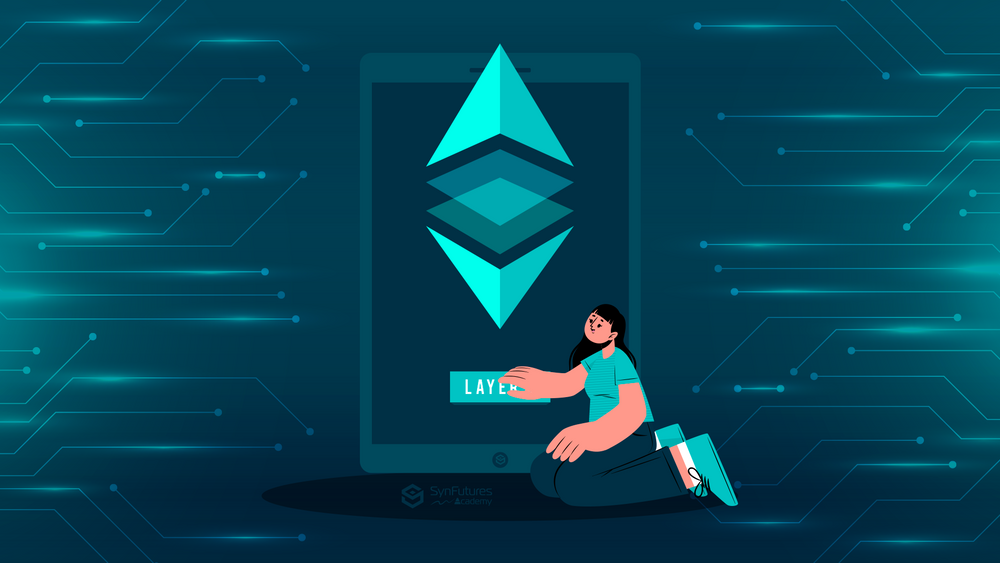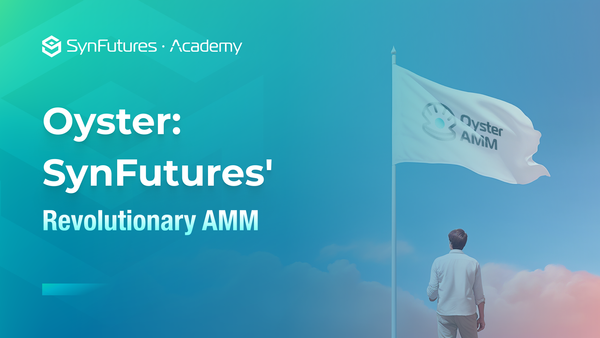A brief introduction to Ethereum scaling solutions
Key takeaways:
- Scaling of Ethereum mainnet has become necessary because of the high cost of using the network and capacity limitation.
- Scaling solutions can conceptually be categorized into on-chain and off-chain types.
- On-chain scaling mainly focuses on Sharding currently.
- Off-chain scaling includes State Channels, Sidechains, Plasma Chains, and Rollups.
Introduction
The Ethereum Mainnet has become a victim of its own success in that it is currently a significant bottleneck for the growth of its ecosystem. Network issues have arisen due to high transaction fees and the limited number of transactions allowed per block, endangering the economic viability of Ethereum-based protocols, start-ups, and others with sound business models. The driven-up cost of using the network and the capacity limitation have created the need for scaling solutions. There are multiple solutions being researched, tested, and implemented that take different approaches to achieve similar goals. The main goal of scalability is to increase transaction speed (faster finality), and transaction throughput (higher transactions per second), without sacrificing decentralization or security.
Conceptually, the solutions can be categorized into on-chain scaling and off-chain scaling. On-chain scaling refers to any increase in capacity at the core blockchain layer. The most common on-chain scaling prescription is increasing the amount of data that can fit in each block. By raising the data limit, each 13-second block interval can fit more transactions. Other examples of on-chain scaling are centered around signatures and manipulating the amount of data required for a valid transaction. Sharding is currently the main focus for on-chain scaling.
Off-chain scaling refers to building additional layers that can handle transactions without using Ethereum mainnet, or the core blockchain. They require no changes to the existing Ethereum protocol. Layer 2 solutions derive their security directly from layer 1 Ethereum consensus. These include rollups or state channels. Other solutions involve the creation of new chains in various forms that derive their security separately from Mainnet, such as sidechains or plasma chains. These solutions communicate with Mainnet but derive their security differently to obtain a variety of goals.
Below gives a general categorization of major Ethereum scaling solutions. In this article, we’ll have a brief overview of these solutions with an introduction of the characteristics of each solution.
Sharding
Sharding is the process of splitting the entire Ethereum network into multiple portions, called “shards”, to spread the load. Each shard would contain its own independent state, meaning a unique set of account balances and smart contracts. The users on each shard have their own account balances away from the main Ethereum network and can only transact with other users on the shard. Sharding attempts to break up the blockchain into multiple parts, so nodes aren’t responsible for processing every transaction broadcasted on the Ethereum network.
An easy way to think of sharding is to imagine if Ethereum was split into thousands of islands. Each island has its own ecosystem and features and everyone belonging to that island can enjoy them. If they want to contact other islands, they will have to use some sort of protocol that Sharding allows. It creates a way for each shard to store individual receipts of each transaction. Since they’re cryptographically secure, they can be brought back to the main chain at any time.
Since nodes are only responsible for validating the data for the shard, sharding drastically reduces the hardware requirement. In the vision of the Ethereum community, sharding will eventually let users run Ethereum on a personal laptop or phone. This would let more people participate and increase the security because of the more decentralized the network, the smaller the attack surface area.
To date, no blockchain has all three traits – decentralization, scalability, and security – without sacrificing one of them. Sharding is Ethereum’s most formidable option to solve the scalability trilemma. Yet, sharding is definitely the most complex scaling solution out of all and is also the one that is expected to be released last.
State Channels
State channels refer to the process in which users transact with one another directly outside of the blockchain, and then settle finality with Mainnet. They require a user to deposit a snapshot of the latest Ethereum state that the user controls into a multi-signature smart contract. This snapshot will contain important data such as the ETH holdings of an Ethereum address at a given time.
A brief example of how State Channels work is like this:
1. Create a multisignature smart contract that can accept Ether and payout parties who have sent it Ether.
2. Alice and Bob, who do frequent transactions with each other, lock up a portion of the state by sending 1 ETH each to the multisignature contract and open the state channel.
3. Alice and Bob start making transactions. They sign each transaction and send them to one another, each one making a copy of the signature for later reference.
4. Each transaction contains a nonce so the smart contract can know the chronological order of transactions.
5. When they are finished transacting, they close the state by submitting a transaction to the Ethereum blockchain.
6. After the state is updated and unlocked, the smart contract sends each party their remaining Ether balance.
Think of State Channels like a chess game where players place an ante to start the game. This transaction would be recorded on-chain and open a channel. Individual moves would be signed by each player within the channel. The game would continue until a player leaves or the game ends, at which point one of the players or the game itself would appeal to Mainnet for a ruling and payout of the winnings.
State Channels allow for nearly free off-chain transactions with instant transaction finality and superior privacy because only the state channel operator and participants in the state channel have visibility into the off-chain transactions. However, the time and cost to set up and settle a channel might not be so good for occasional one-off transactions. It is useful when there are lots of state updates and when participants of the channels are always available.
Notable mentions of the State Channel projects include Connext, Raiden Network, Celer, and Perun.
Sidechains
Sidechains are independent blockchains that are EVM (Ethereum Virtual Machine) compatible and run in parallel to the Ethereum mainnet. They run under their own chosen rules of consensus, such as proof-of-authority (PoA), proof-of-stake (PoS), or Byzantine fault tolerance, and are connected to Ethereum mainnet by a two-way bridge. What makes sidechains particularly exciting is that they work the same way as the Ethereum mainnet because they support EVM. They look, feel and act just like the mainnet. For any dApps that want to use sidechains, it is just a matter of deploying the code to that sidechain via the Web3 API, making sidechains extremely easy to adopt.
Depending on the network approach with respect to chains (independent multi-chain vs shared chains), transaction privacy can possibly be preserved via gated access to a chain. The particular approach each network takes must be evaluated on its own to determine suitability with respect to scalability, security, and fitness for purpose. Some ecosystem participants do not consider sidechains to be true L2 solutions as they neither inherit sufficient security assurances of Ethereum Mainnet due to a lack of on-chain transaction data nor provide the ability to arbitrate disputes on the Ethereum Mainnet. Proponents will argue that their consensus and validator models are as rigorous as Ethereum and that their operational ties with Ethereum provide sufficient security and transparency in an Ethereum-native form.
Notable sidechains include xDai Chain, POA Network, Polygon PoS, Skale, and Loom Network.
Plasma chains
Plasma chains are separate blockchains that are anchored to the Ethereum mainnet and use the mainnet as a trust and arbitration layer. They are essentially smaller copies of the mainnet. Plasma is similar to state channels in that the underlying goal is to move as much transaction bloat off of the main chain as possible. State updates conducted on child chains can always be brought back to the Ethereum network in the case of dispute or if the user wants to stop transacting in the child blockchain.
Child chains can take on varying complexity. They can have their own consensus mechanisms, their own block sizes, and their own confirmation times, the design is very malleable relative to each application. Some developers have even begun researching child chains within child chains..within child chains because merkle trees enable the creation of limitless stacks of these chains. The end goal of all of this is simple – to move the transactions off the mainnet so they could be processed faster and cheaper.
Notable mentions of plasma chains include OMG Network, Gluon, Gazelle, and LeapDAO.
Rollups
Rollups are solutions that perform transaction execution outside layer 1 (mainnet) but post the transaction on layer 1. A smart contract on layer 1 will hold the crypto funds and enforce correct transaction execution on layer 2 by using the transaction data on layer 1. As all transaction data is on layer 1, rollups inherit the security properties of layer 1 while performing execution outside of layer 1. There are two types of rollups with different security models – Optimistic rollups and Zero-Knowledge (ZK) rollups. Please read here for more about rollups, and the comparison between the two types of rollups.
Closing
The different Ethereum scaling solutions introduced here have the prolific potential for disrupting the blockchain landscape in a positive way. Layer 2 solutions are basically the next big thing in ensuring the resourceful utilization of blockchain networks. On the other hand, it is also important to note that many Ethereum scaling solutions are in the development or testing stages. So, it may take some time before we see full-fledged layer 2 solutions dominating the Ethereum landscape.
Discover SynFutures' Crypto Derivatives products: www.synfutures.com/.
Disclaimer: SynFutures Academy does not guarantee the reliability of the site content and shall not be held liable for any errors, omissions, or inaccuracies. The opinions and views expressed in any SynFutures Academy article are solely those of the author(s) and do not reflect the opinions of SynFutures. The SynFutures Academy articles are for educational purposes or information only. SynFutures Academy has no relationship to the projects mentioned in the articles, and there is no endorsement for these projects. The information provided on the site does not constitute an endorsement of any of the products and services discussed or investment, financial, or trading advice. A qualified professional should be consulted prior to making financial decisions.




